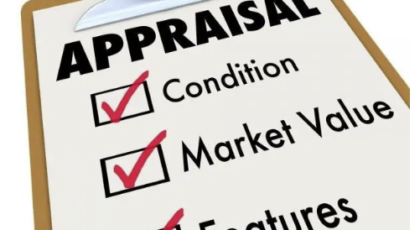Understanding the Ins and Outs of a Business Line of Credit
Introduction
Running a business often requires access to additional funds for various purposes, such as managing cash flow, purchasing inventory, or investing in growth opportunities. One popular financing option for businesses is a business line of credit. But how does a business line of credit work? In this article, we will dive deep into the mechanics of a business line of credit, exploring its features, benefits, and potential drawbacks. By the end, you’ll have a comprehensive understanding of this financial tool and whether it’s the right fit for your business needs.
Table of Contents
- What is a Business Line of Credit?
- How Does a Business Line of Credit Work?
- Types of Business Lines of Credit
- Secured Line of Credit
- Unsecured Line of Credit
- Qualifying for a Business Line of Credit
- Benefits of a Business Line of Credit
- Drawbacks of a Business Line of Credit
- How to Use a Business Line of Credit Effectively
- Common Uses of a Business Line of Credit
- FAQs
- FAQ 1: Can I use a business line of credit for personal expenses?
- FAQ 2: Are business lines of credit suitable for startups?
- FAQ 3: What is the difference between a business line of credit and a business loan?
- FAQ 4: Can I pay off my business line of credit early?
- FAQ 5: How long does it take to get approved for a business line of credit?
- FAQ 6: Can I access my business line of credit online?
- Conclusion
1. What is a Business Line of Credit?
A business line of credit is a flexible form of financing that allows businesses to borrow funds up to a predetermined credit limit. It functions similarly to a credit card but is specifically designed for business expenses. The major distinction is that instead of making purchases directly with a credit card, businesses can withdraw cash or transfer funds from their line of credit to their business bank account.
2. How Does a Business Line of Credit Work?
A business line of credit works by providing businesses with access to a predetermined amount of funds that they can draw upon as needed. Once approved for a line of credit, the borrower has the flexibility to use the funds for any business-related purpose, such as covering operating expenses, managing seasonal fluctuations, or taking advantage of growth opportunities.
Here’s a step-by-step breakdown of how a business line of credit typically works:
- Application Process: To apply for a business line of credit, you’ll need to provide detailed information about your business, such as financial statements, tax returns, and proof of ownership. The lender will evaluate your creditworthiness and assess the risk involved in extending a line of credit to your business.
- Credit Limit Determination: If your application is approved, the lender will assign a credit limit based on various factors, including your business’s financial health, credit history, and collateral (if applicable). The credit limit represents the maximum amount you can borrow from the line of credit.
- Accessing Funds: Once you have been granted a business line of credit, you can access the funds through different means, such as online transfers, checks, or a dedicated line of credit card. The borrowed amount can be used for various purposes, and you will only pay interest on the funds you withdraw.
- Repayment Terms: A business line of credit operates on a revolving basis, meaning you can borrow, repay, and borrow again within the predetermined credit limit. Repayment terms vary depending on the lender, but typically, you’ll be required to make monthly payments based on the outstanding balance or accrued interest.
- Interest and Fees: Like any form of financing, a business line of credit comes with interest charges and fees. The interest rate can be fixed or variable, depending on the terms of your agreement. Additionally, you may encounter fees such as an annual maintenance fee, transaction fees, or cash advance fees. It’s essential to understand the interest rate and fees associated with your line of credit to assess its cost-effectiveness for your business.
- Credit Availability: As you repay the borrowed funds, the available credit in your line of credit increases. This feature allows you to reuse the funds as needed, making it a flexible financing option for businesses facing fluctuating cash flow or unpredictable expenses.
3. Types of Business Lines of Credit
Business lines of credit can be categorized into two main types: secured and unsecured.
3.1 Secured Line of Credit
A secured line of credit requires collateral to secure the funds borrowed. Collateral can be in the form of business assets, such as inventory, equipment, or accounts receivable. In the event of default, the lender can seize the collateral to recover the outstanding debt. Secured lines of credit often offer higher credit limits and more favorable interest rates, as the collateral reduces the lender’s risk.
3.2 Unsecured Line of Credit
An unsecured line of credit does not require collateral to secure the borrowed funds. Instead, the lender evaluates the borrower’s creditworthiness, business financials, and personal guarantees (if applicable) to assess the risk. Unsecured lines of credit may have lower credit limits and higher interest rates compared to secured lines of credit.
4. Qualifying for a Business Line of Credit
Qualifying for a business line of credit depends on various factors, including your business’s financial health, credit history, and the lender’s requirements. Here are some common criteria lenders consider when evaluating applications:
- Credit Score: Lenders typically look for a good credit score, indicating your ability to manage debt responsibly. A higher credit score increases your chances of qualifying for a line of credit and securing more favorable terms.
- Business Revenue: Lenders assess your business’s revenue to determine its financial stability. Higher revenue indicates a lower risk of default and may lead to a higher credit limit.
- Time in Business: Some lenders require a minimum time in business to qualify for a line of credit. Startups or newer businesses may find it more challenging to obtain a line of credit and may need to explore alternative financing options.
- Collateral or Personal Guarantees: Secured lines of credit require collateral, while unsecured lines of credit may require personal guarantees from the business owner or principal.
It’s important to research different lenders and their specific requirements to find the best fit for your business.
5. Benefits of a Business Line of Credit
A business line of credit offers several advantages for businesses in need of flexible financing. Some key benefits include:
- Flexibility: A line of credit provides flexibility in accessing funds when needed. You have the freedom to borrow and repay within the credit limit, allowing you to manage cash flow fluctuations effectively.
- Cost-Efficiency: Compared to other forms of financing, such as term loans, you only pay interest on the amount you withdraw from your line of credit. This cost-efficiency can save your business money in the long run.
- Emergency Preparedness: Having a line of credit in place ensures that your business is prepared for unexpected expenses or emergencies. It serves as a safety net, providing quick access to funds without the need for extensive loan applications or approvals.
- Opportunity for Growth: A business line of credit can be used strategically to seize growth opportunities. Whether it’s investing in new equipment, expanding your product line, or launching a marketing campaign, having access to a line of credit allows you to capitalize on opportunities as they arise.
- Building Business Credit: Responsible and timely repayment of a line of credit can help establish and strengthen your business credit history. This can improve your chances of obtaining larger lines of credit or other financing options in the future.
6. Drawbacks of a Business Line of Credit
While a business line of credit offers numerous benefits, it’s essential to consider potential drawbacks as well:
- Interest Rates and Fees: Depending on your creditworthiness and the terms of your agreement, the interest rates and fees associated with a line of credit can be relatively high. It’s crucial to carefully review the terms and calculate the total cost of borrowing before committing to a line of credit.
- Risk of Overborrowing: The flexibility of a line of credit can be both a benefit and a risk. If not managed carefully, businesses can fall into the trap of overborrowing, leading to excessive debt and financial strain.
- Collateral Requirement: Secured lines of credit require collateral, which puts your business assets at risk in the event of default. If you’re unable to meet the repayment obligations, you may lose the collateral you put up to secure the line of credit.
7. How to Use a Business Line of Credit Effectively
To maximize the benefits of a business line of credit, it’s essential to use it effectively. Here are some tips to consider:
- Plan Ahead: Determine your borrowing needs in advance and develop a clear plan for how you will use the funds. This will help you avoid impulsive borrowing and ensure that the funds are allocated strategically.
- Monitor Your Credit Limit: Keep a close eye on your credit limit and borrowing capacity. Knowing how much is available to you at any given time will help you make informed decisions and prevent exceeding your credit limit.
- Repayment Discipline: Make timely repayments to maintain a positive credit history and avoid unnecessary interest charges. Consider setting up automatic payments or reminders to ensure you never miss a payment.
- Regular Reviews: Periodically review your line of credit terms and compare them to other financing options in the market. This will help you ensure that you’re still getting the best deal and make adjustments as needed.
- 8. Common Uses of a Business Line of Credit
- A business line of credit can be utilized for various business purposes. Here are some common uses:
- Managing Cash Flow: Use the line of credit to cover short-term cash flow gaps, such as paying suppliers, covering payroll, or managing unexpected expenses.
- Inventory Purchases: Purchase additional inventory to meet increased demand or take advantage of bulk buying opportunities.
- Equipment and Asset Financing: Use the funds to acquire or lease equipment, machinery, or other business assets necessary for operations or expansion.
- Marketing and Advertising: Invest in marketing campaigns, advertising initiatives, or website development to promote your business and attract new customers.
- Seasonal or Cyclical Expenses: For businesses with seasonal or cyclical fluctuations, a line of credit can help bridge the gap during slower periods or ramp up production during peak times.
- Business Expansion: Utilize the funds to open new locations, renovate existing premises, or launch new products or services.
- Emergency Situations: In the event of unforeseen circumstances, such as natural disasters or equipment breakdowns, a line of credit can provide the necessary funds to recover and continue operations.
- 9. FAQs
- Here are some frequently asked questions about how a business line of credit works:
- FAQ 1: Can I use a business line of credit for personal expenses?
- No, a business line of credit should be used exclusively for business-related expenses. Mixing personal and business expenses can create accounting complexities and financial risks.
- FAQ 2: Are business lines of credit suitable for startups?
- Startups may find it more challenging to qualify for a business line of credit due to limited financial history. However, alternative financing options, such as microloans or crowdfunding, can be explored to meet their funding needs.
- FAQ 3: What is the difference between a business line of credit and a business loan?
- A business line of credit offers a revolving credit limit that can be accessed and repaid multiple times, similar to a credit card. A business loan, on the other hand, provides a lump sum amount upfront, which is repaid over a fixed term.
- FAQ 4: Can I pay off my business line of credit early?
- Yes, in most cases, you can pay off your business line of credit early without any penalties. Early repayment can save you on interest costs and improve your creditworthiness.
- FAQ 5: How long does it take to get approved for a business line of credit?
- The time for approval varies among lenders, but it can range from a few days to a few weeks. It depends on factors such as the complexity of your application, the lender’s review process, and the documentation required.
- FAQ 6: Can I access my business line of credit online?
- Many lenders offer online access to business lines of credit, allowing you to view your available credit, make transfers, and monitor your account activity conveniently.
- 10. Conclusion
- Understanding how a business line of credit works is crucial for any business owner seeking financing options. A business line of credit provides the flexibility and access to funds needed to manage day-to-day operations, seize growth opportunities, and navigate unforeseen challenges. By considering the benefits, drawbacks, and effective use of a line of credit, you can make an informed decision about whether it aligns with your business’s financial needs and goals.
- Remember to research different lenders, compare terms and rates, and ensure that you can comfortably manage the repayment obligations. A business line of credit, when used responsibly, can be a valuable financial tool to support your business’s success.

















